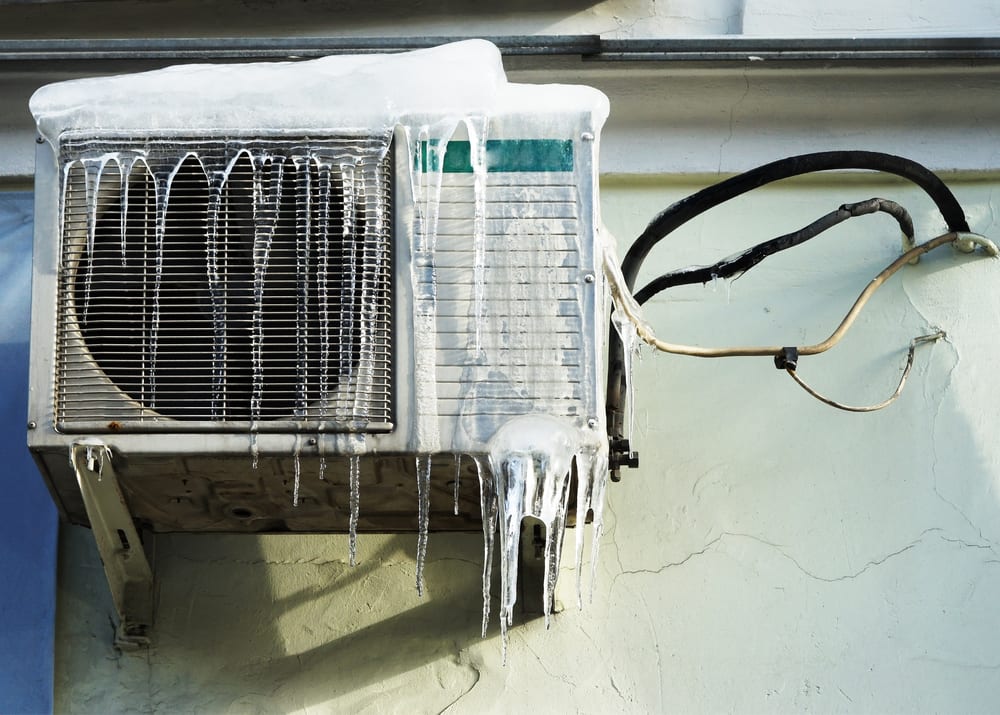What Should I Do If My AC Pipe Is Frozen? - Essential Tips for Fixing Functionality
What Should I Do If My AC Pipe Is Frozen? - Essential Tips for Fixing Functionality
Blog Article
What are your ideas concerning What Causes AC Pipes To Freeze??

Introduction
Discovering that your AC pipe is frozen can be concerning, especially during warm summertime when you rely upon your air conditioning system one of the most. Comprehending what to do in such a situation is essential to stop additional damage to your air conditioning system and ensure your convenience indoors.
Understanding the Causes
Several variables can contribute to the cold of an a/c pipe. Recognizing these reasons can help you resolve the issue successfully.
Absence of Airflow
One common source of an icy a/c pipeline is inadequate air movement. When the air movement over the evaporator coil is limited, it can create the coil to go down below freezing temperature, resulting in ice formation on the pipe.
Reduced Refrigerant Levels
Not enough cooling agent levels in your AC system can additionally lead to an icy pipe. Low refrigerant degrees can trigger the pressure in the system to drop, bring about the freezing of wetness on the evaporator coil.
Cold Weather Conditions
In chillier climates, freezing temperatures outside can contribute to the freezing of AC pipelines. If your air conditioning device is not correctly shielded or if there are leaks in the ductwork, chilly air can penetrate the system, creating the pipe to freeze.
Dirty Air Filters
Filthy or clogged up air filters can restrict airflow in your a/c system, bring about numerous issues, including a frozen pipeline. It's necessary to replace or clean your air filters frequently to make certain proper airflow and prevent ice build-up.
Indicators of a Frozen A/c Pipe
Acknowledging the indicators of an icy a/c pipe is essential for punctual activity.
Decreased Airflow
If you notice a substantial reduction in air movement from your vents, it might indicate a frozen pipeline.
Ice Buildup on the Pipe
Noticeable ice buildup on the cooling agent line or the evaporator coil is a clear indication of a frozen air conditioner pipe.
Odd Sounds from the Unit
Unusual noises, such as hissing or gurgling, originating from your air conditioning unit can signify that there's ice existing on the pipe.
Immediate Actions to Take
When faced with a frozen air conditioner pipeline, it's vital to act quickly to avoid further damage to your air conditioning system.
Turning off the air conditioner
The very first step is to shut off your ac unit to avoid the system from running and exacerbating the concern.
Looking for Blockages
Check the area around the indoor device for any kind of obstructions that might be obstructing air flow, such as furniture or drapes.
Thawing the Pipe
You can use mild techniques like placing towels taken in warm water around the icy pipe to aid thaw it gradually.
Preventive Measures
Taking safety nets can help stay clear of future occurrences of an icy AC pipeline.
When DIY Methods Fail
If your attempts to thaw the pipe or address various other issues are not successful, it's time to call in an expert.
Importance of Hiring a Professional HVAC Technician
A licensed HVAC professional has the knowledge and devices essential to diagnose and repair issues with your a/c system securely and successfully.
Normal Maintenance Checks
Set up normal upkeep consult an expert HVAC specialist to ensure that your AC system is running successfully.
Changing Air Filters
On a regular basis replace or cleanse your air filters to stop air movement restrictions and preserve ideal performance.
Protecting Exposed Pipes
If your air conditioning pipes are revealed to chilly temperatures, take into consideration protecting them to stop freezing throughout winter season.
Seeking Professional Help
If DIY techniques fall short to fix the concern or if you're uncertain concerning how to proceed, it's ideal to seek support from a certified HVAC technician.
Final thought
Taking care of an icy AC pipe can be a discouraging experience, yet recognizing just how to react can help minimize damage and restore comfort to your home. By understanding the causes, acknowledging the indicators, and taking prompt action, you can successfully address the issue and avoid future occurrences.
G UP? HOW TO FIX IT?
It happens all over America. And the rest of the world probably. It’s the hottest day ever and for some darn reason your AC isn’t cooling the house. You fiddle with the thermostat to try and fix the problem. Nada. All you can do now is go outside and check the AC unit. You make your way there and find your air conditioner unit is frozen! But how?
In this post we’ll cover how you can tell that your air conditioner has frozen (other than the obvious reasons), what could have caused the freeze, and some of the things you can do about your AC freezing up. And if you have a frozen heat pump condenser, read our blog about it to learn what to do! But remember, it is always best to avoid your AC freezing up with an AC tune up. And if you are moving into a home, it's critical to get HVAC inspection so that you are aware of an AC problems before you move in.
Keep reading and you may be able to fix the frozen AC yourself. If you can’t, call an HVAC specialist. If you live in Maryland, call SuperTech HVAC for AC repair. We’ll take care of it.
How Does An Air Conditioning Unit Work?
How you probably imagine an AC works is wrong. Contrary to popular belief, an AC system does not inject cool air into a building. Instead, it removes the heat from inside and transfers it outside. Cool huh? (Pun intended).There are 4 major components among the 3 stations of an air conditioning system: the evaporator coil, the compressor, the condenser, and the refrigerant – a special chemical that links everything together through a closed loop system.
Station 1:
Warm indoor air is sucked into the return vent, through a filter, and blows over the evaporator coil. The heat is absorbed into the cold refrigerant, turning it from liquid to gas. The air, which is now cool, is blown back into the home to areas that your thermostat, i.e. you, has decided.
Station 2:
The refrigerant makes its way outside the house to the compressor, which squeezes the warm refrigerant, raising its gaseous temperature even more.
Station 3:
When the super hot vapor refrigerant reaches the condenser, the last step, the heat is expelled and absorbed into the outdoor air. The refrigerant instantly cools, which changes it from gas back to liquid form. The cold liquid refrigerant is now ready to return to station 1 and repeat the process.
Is Your AC Freezing Up? Here Are The Signs:
As you may have guessed, your air conditioner unit freezing up on a hot day is not normal.
If this happens, there's no need to panic. Often the issue can be solved with a little troubleshooting. If the AC unit is left frozen for too long however, you may find yourself with a bigger problem.
First things first, how do you know your AC is frozen?
Well, the obvious sign is the ice on your refrigerant line-set pipe. Simply check between your outdoor AC unit and your home's exterior wall to see whether your AC line frozen.
You might also have a frozen evaporator coil. This one's not as easy to check. You'll need to open a panel on the indoor unit to inspect. Don't do this unless you're handy. If you aren't, call an HVAC pro like SuperTech HVAC or you may damage something in the process.

Hopefully you enjoyed our article about Why Is Ice On My Outside Air Conditione. Many thanks for finding the time to browse our piece of content. Liked our write up? Please share it. Help someone else locate it. I value reading our article about Air Conditioner Frozen? How To Fix your Frozen AC Line.
Visit My Website Report this page